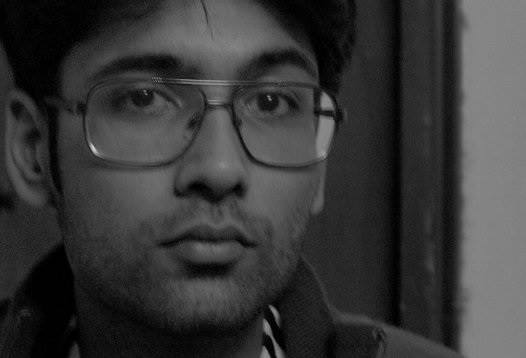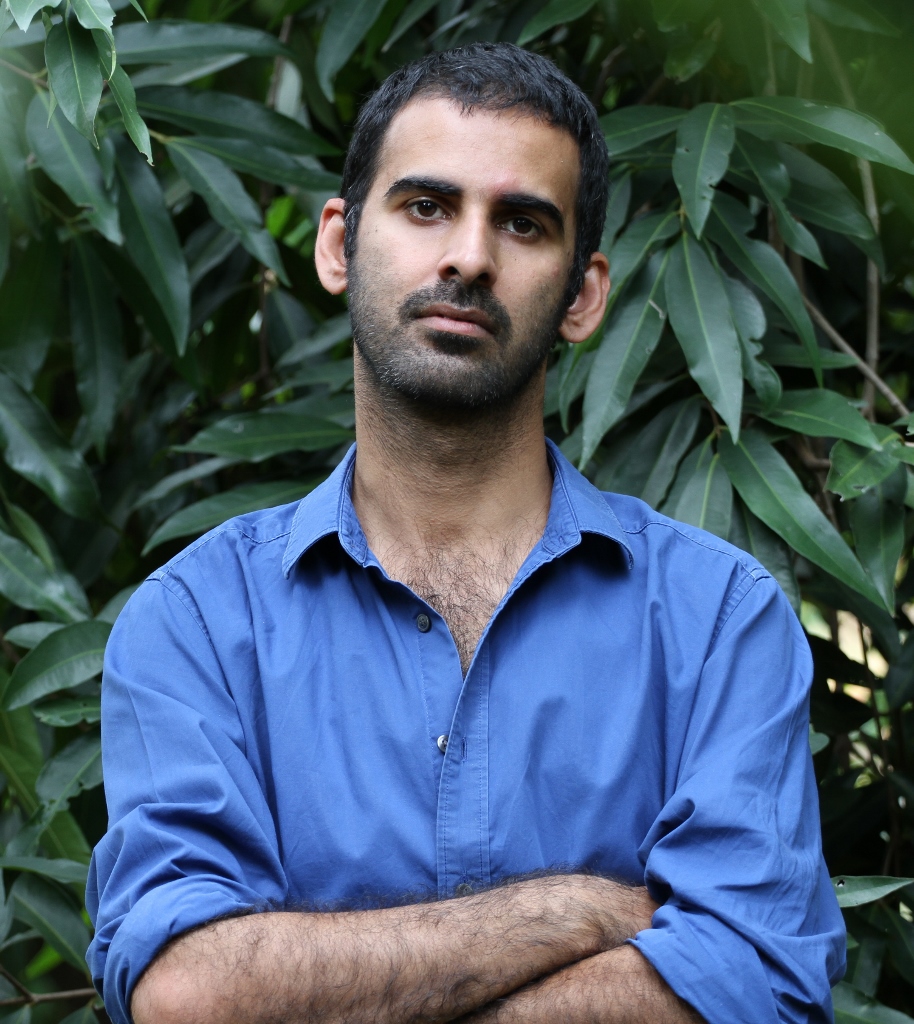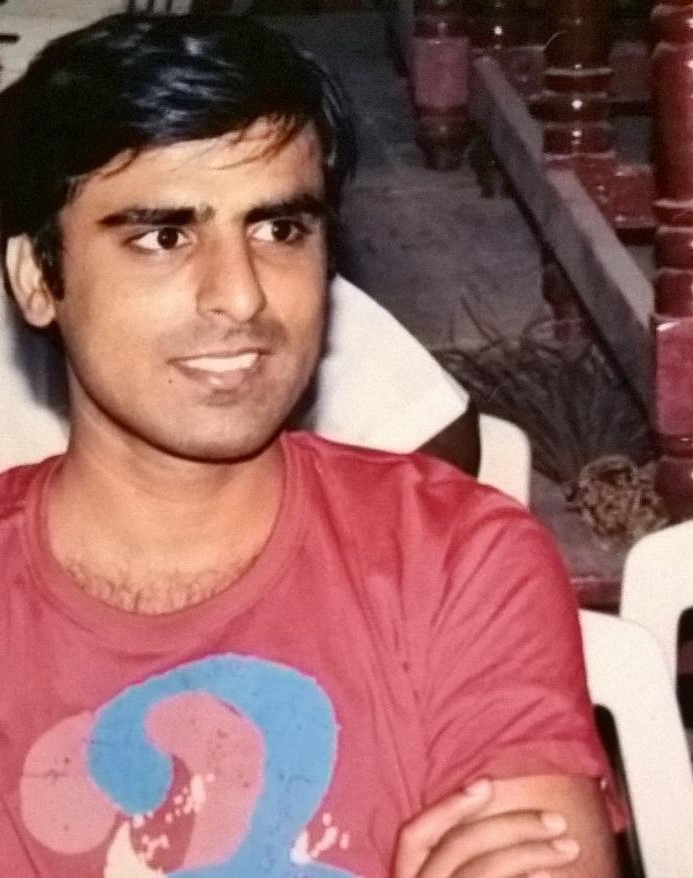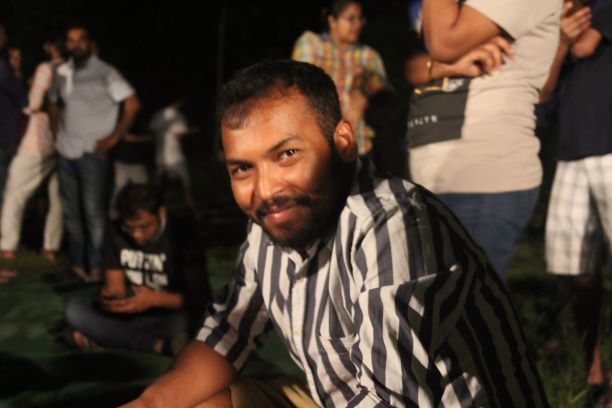Abhishek Juneja
 In this article, I attempt to unpack the vanguardist anxieties of Indian Judiciary and examine its role in the perversion of the Indian Constitution’s design for social justice.
In this article, I attempt to unpack the vanguardist anxieties of Indian Judiciary and examine its role in the perversion of the Indian Constitution’s design for social justice.
The rigid, hierarchical social order with the Brahmin on top, or the caste system, has traditionally been understood and normalized by the knowledge apparatuses as a timeless, continuous truth – almost as though a force of nature. This chronological rationalization of a social system inadvertently lends a degree of causality to it. The need to map and force-fit each of the present-day castes into the Vedic formulation of four-fold Varnas is one of its many manifestations.
Causal systems or Ordered systems are predictable, and hence to some extent, controllable. They are largely dependent on and determined by past events. The oldest causal logic used in sustaining the caste order has been the principle of karma and reincarnation which implied that birth in a particular caste was an outcome of the karma of the previous birth. This logic has evolved through the centuries and a more nuanced interpretation of karmic causation lies in the theory of merit that believes certain castes are superior because they have greater merit, which is a result of their hard work and innate talent. It is a debate worthy of a full essay whether this ‘evolution’ in logic – from birth to merit – is evolution at all. The other debate, which is briefly being touched upon here, is whether the continuity and, more importantly, the change in caste relations have non-causal determinants. To understand this, the apparently dialectical engagement of the Indian Judiciary and the Indian Legislature on the issue of affirmative action is put under scrutiny, including the curious case of Uttarakhand.
Basic Structure Doctrine: Judicial Roulette
The fundamental right of Equality, as enshrined in Article 14 of the Indian Constitution, primarily exists to remove all forms of arbitrariness from the sphere of justice. This entrusts the Judiciary with its most basic responsibility – that of ensuring that every iota of arbitrariness is weeded out beyond a reasonable doubt. The bedrock of Article 14 is the principle of Equality before Law, which in itself is a constituent of the principle of ‘Rule of Law’. A.V. Dicey’s conception of Rule of Law has three aspects – absence of arbitrary power, equality before the law and the primacy of the rights of the individual. The latter, however, is not applicable to the Indian context. It is vital to understand why ‘the primacy of rights of individual’ has been left out of the scope of Rule of Law in the Indian constitution. Unlike in Britain and other liberal democracies of the world, the individual in India did not have any rights prior to the adoption of the Indian Constitution. In the absence of Social Contract, and under the precinct of a caste-ordered society (which to quote Dr. Ambedkar provided for the division of labourers at the pretext of the division of labour), the idea of rights had been alien to India. Thus, the Indian Constitution was not an outcome of individual rights but the source of individual rights. Under these circumstances, the constitution has had a far more revolutionary role in India than it does in Britain and elsewhere.
The trias politica, or the separation of power model, as explicated in the Indian Constitution (IC), mandates the Judiciary to act as the final arbiter of IC and to act as a guardian and a watchdog ensuring faithful protection of fundamental rights. The popular imagination in India, built on the edifice of the three-legged knowledge apparatus of the academia, media and publishing establishments, sees the Judiciary as the fairest of the three arms of Government. While the legislature is understood to be made upon populist, inept demagogues, the image of the executive remains tarnished due to its inefficiency and corrupt practices. Only the judiciary has managed to preserve its honourableness and the common citizen continues to retain some degree of faith in this institution, albeit with a few grievances of slowness, opaqueness etc. The battle for social justice and equality in our democracy, thus, is fought largely within the margins of judicial jurisprudence and popular representation.
Social Justice: Judicial and Legislative Interventions
To inspect closely the evolution of social justice in the Indian legal landscape, it would be fruitful to quickly run through the most important judicial and legislative interventions on the matter of Affirmative Action for Scheduled Castes, Scheduled Tribes and Other Backward Classes in the past seven decades.
The first time the issue of reservations caused visible discomfort on the judicial scene was immediately after India turned into the Constitutional Republic (the Brahmins lost little time in registering protest). In the State of Madras v/s Champakam Dorairajan case of 1951, Supreme Court (the judgment was written by Justice S.R. Das, a Baidya-Brahmin belonging to the Brahmo Samaj, and a pupil of Rabindranath Tagore) said that giving caste-based reservations was against Art 16(2).
In response to this judgment and entirely due to the efforts of Periyar and Dr. Ambedkar, the First Amendment Act of 1951 was passed, it empowered the state to make special provisions for the advancement of socially and educationally backward classes. It also added Ninth Schedule to protect this law from judicial review.
A decade later, in the M.R. Balaji v/s State of Mysore case of, the Supreme Court (the principle argument was made by Justice P.B. Gajendragadkar, a Brahmin judge from a family of Sanskrit scholars, who after retirement carried forward his family’s tradition in Vedanta and Mimamsa philosophy) said that caste may be a relevant factor to define backwardness, but it cannot be the sole or even the dominant criterion; poverty, occupation, and place of habitation may all be relevant factors to be taken into consideration. Further, it added that if classification for social backwardness were to be based solely on caste, then the caste system would be perpetuated in the Indian society. Backwardness, thus, may be defined without any reference to caste. It also capped the maximum possible reservation at less than 50 percent; how much less than 50 percent would depend upon the relevant prevailing circumstances in each case.
It is important to note that despite the First Backward Classes Commission under Kaka Kalelkar having been set-up ten years prior to the Balaji judgment, it was neither referred nor adhered to. The Commission had defined backwardness on the basis of a) position in caste hierarchy b) status of education and c) representation in government services, trade, and industry. The question of economic backwardness was discussed in detail and shown to be the result and not the cause of social backwardness.
In State of U.P. V. Pradeep Tandon case of 1974, the Allahabad HC ( the judgment was written by Justice T.S. Misra, a Brahmin zamindar, who is also the father of BSP leader Satish Mishra ) a new criterion to determine backwardness was devised, namely ‘hill and Uttarakhand’. It was found that the absence of means of communication, technical processes and educational facilities kept the poor and illiterate people in the remote and sparsely populated areas backward. In Jayasree v. State of Kerala case of 1976 (written by Justice A.N Ray, famous for upholding Emergency and the 43nd Constitutional Amendment Act), the income criteria officially entered the books and it was recognized that only those among the members of the mentioned castes, whose economic means were below the prescribed limit were socially and educationally backward, and the educational backwardness was reflected to a certain extent by the economic conditions of the group.
A paradigm shift in the fight for social justice came with the implementation of Mandal Commission Report, ten years after it had been submitted. It made way for a total of 49.5 percent reservation (22.5 percent for SCs and STs and 27 percent for socially and educationally Backward Classes) in public service. It took the Indian State another fifteen years to implement the report in higher education. But before the recommendation could be executed, the judiciary reviewed it under the Indra Sawhney v. Union of India case of 1993. The important takeaway from this judgment was its invocation of the Creamy Layer principle in determining reservations to OBCs. It also disallowed reservations in promotions; reiterated that the 50% cap could not be breached except in extraordinary circumstances and that he carry forward rule in case of unfilled backlog vacancies was valid, but only within the limits of the 50% rule.
It mandated for certain posts to be excluded from reservations where the recruitment was to be strictly merit-based.
In response to these judicial invocations, the Indian Parliament passed a series of Constitutional Amendment Acts (CAA). The 76th CAA, 1994 included the Tamil Nadu Reservation Act of 1994 (which provides for 69 percent reservation of seats in educational institutions and posts in state services) in the Ninth Schedule to protect it from judicial review. The 77th CAA, 1995 provided for reservation in promotions in government jobs for SCs and STs. This amendment nullified the Indra Sawhney ruling with regard to reservation in promotions. In the 81st CAA of 2000, the 50 percent ceiling on reservation in backlog vacancies was broken. Further, the 85th CAA of 2001 provided for ‘consequential seniority’ in the case of promotion for government servants belonging to the SCs and STs with retrospective effect from June 1995.
The last round yet of the Legislature’s teasing defiance of the Judiciary ensued on the question of reservations in minority and non-minority unaided private colleges. In Inamdar v/s State of Maharashtra case of 2004, the Supreme Court ruled that the state cannot impose its reservation policy on the aforementioned institutions. In response, the 93rd CAA, 2005 was passed that partly empowered the state to make special provisions for the socially and educationally backward classes or the Scheduled Castes or the Scheduled Tribes in educational institutions including private educational institutions (whether aided or unaided by the state), except the minority educational institutions.
The quantum leap in the development of judicial rationale is said to be the Kesavananda Bharti case of 1973. Often hailed as the greatest innovation in India’s judicial history, a case that saved Indian Democracy from the clutches of the populist legislature, and an invocation that has no rival, this case cleared the way for Judiciary to step into what has regularly been identified as ‘Legislative Vacuum’. But the vagueness with which the Basic Structure Doctrine (BSD) was outlined in the Kesavananda Bharti judgment has only been compounded over the years, reaching peak arbitrariness when the Supreme Court struck down the NJAC Bill in 2015 by including the ‘insularity and independence’ of the judiciary under the ambit of Basic Structure Doctrine. The conventional debate on this matter has been understood as being between Judicial Activism and Judicial Overreach, but in the view of this author, it needs to be seen as Judicial Anxiety, Judicial Foreshadowing, and Judicial Preemption. Pierre Bourdieu’s use of ‘habitus as structured structures’ is perhaps a good place to situate this preemption.
Reification of the Poor Brahmin Myth and the 10% reservation for EWS Savarnas
The only thing more surprising to the keen, critical eye than the speed with which the 10% Bill was steamrolled through LS and RS (with the willing support of so-called Bahujan parties, one must add) was the sudden introduction of the Bill in the first place. But the eye is not so keen after all or all that critical.
The myth of the Poor Brahmin has been craftily curated through various Brahmin channels – the academia, media, publishing, civil society groups, NGOs, and at the most crucial level of execution – by the Indian higher judiciary. To that effect, this is carefully constructed ignorance. From the Poor Brahmin in Vishnu Sarman’s Panchtantrinamdaa installed in early history to his modern kin in Satyajit Ray’s Apu Trilogy, a consensus has been manufactured that the priestly class was either especially destitute or such destitution was the norm. From eminent sociologists resigning over the question of OBC reservations to media regularly running stories informing us that Brahmins were the new Dalits, the social reality of both our past and present has been obfuscated to the point where it has become impertinent to even question it. New fictions on Merit have been a similar contrivance like the olden fictions on Karma. To add to it, a celebratory tenor has been attributed to Merit, with ‘rags to riches’ stories used to justify its certitude. But like Adorno had said, “In the end, glorification of splendid underdogs is nothing other than the glorification of the splendid system that makes them so.”
Merit, as is conceived today, completely undermines the intersubjectivity in the processes of knowledge dissemination, knowledge assimilation, and knowledge reception, and most critically in the process of judgment as the fundamental act of knowledge.
The 124th CAB concerning this 10% reservation, formally introduced on Jan 7th 2019, came at the back of at least four decades of covert judicial propaganda and legislative vacuum. And just as the propaganda was slyly executed, the vacuum has been carefully curated – both reinforcing and reproducing each other. Given how the SC is a court of record and previous judgments act as a reference point and precedents for future generations, the legacy of legally-and-ethically unsustainable arguments on equality-and-justice have obliterated the primal arguments of Indian constitution and that of constituent assembly debates, the primal argument being that of ‘Representation’. Dr. Ambedkar went as far as saying that ‘a representative government is better than a merely efficient one’. Elsewhere, (non-Brahmin) Justice P.B. Sawant has noted, that “Article 16 (4) is not a poverty alleviation programme. Its singular aim is to redistribute power to those who have been kept out of the state apparatus so as to end their educational, social and economic backwardness and this class is not less than 77 1/2 % of the population of the country.”
The Judiciary and the First-Past-The-Post-compromised-Parliament have made a complete mockery of the dialectical process, where synthesis of all apparently contradictory ideas is the Status Quo. Like in a symphony, the repetitions, and variations in this dialectical intercourse act in harmony, resulting in illusory (forward) movements. In truth, the legislature’s disinclination towards social transformation affords fertile ground for the Judiciary to interpret inaction as an invitation to intervene. And every judicial pronouncement that follows offers the legislature an opportunity to posture as revolutionary while only maintaining the Status Quo. The Judiciary’s reluctance to base its jurisprudence on solid empirical data is reflected in its visible disinterest in forcing the Government to publish the Socio-Economic Caste Census report of 2011. An agency with absolute powers to dispense justice can surely do with vital numbers on socio-economic materiality, given how there is a dearth of data in India in general.
The Indian Judiciary seems light years away from the kind of judicial logic and brevity used by Earl Warren when he declared that “in the field of public education the doctrine ‘separate but equal’ has no place. Separate educational facilities are inherently unequal.”
Uttarakhand and Identity: Conflation and Contradiction
The case of Uttarakhand should serve both as an introduction to the farcical 10% Bill and a barometer for how things may unfold in the near future.
The Jaunsar-Bawar region, formerly of the Sirmur (Nahan in present-day Himachal Pradesh) state, lies in the northern part of Dehradun district. In 1967, the entire region was designated as a tribal area, making its entire population eligible for benefits under the Scheduled Tribe category. In truth, the Jaunsari society is as caste-stratified as any other part of India, with the majority of Dalits being landless. Unsurprisingly, most of the seats reserved under ST quota are hogged by Brahmins and Rajputs. The Dalits here suffer on three counts- the rigid and vulgar hierarchy is at full play with bonded labour practiced even to this day, they are unable to compete with Savarnas both electorally and for jobs and admissions, and worst of all they remain ineligible for the SC status since law recognizes the area as homogeneously tribal.
But far more fascinating than this absurdist ‘tribal’ construct is how it was established legally. While some of the early blame for it must be shared by the British anthropologists who identified the whole population as one ‘Khasa’ race, most of the concoction happened in 1967 when Brahmin and Rajput MLAs from the region testified before a committee that on the basis that – 1. the wide-spread practice of polyandry which was symptomatic of a ‘tribal culture’, 2. absence of untouchability in the present and 3. the otherwise unheard-of tradition of Rajputs taking loans from the ex-untouchable Kolta community – the whole region be termed ‘tribal’. These white lies were packaged well and the committee approved.
Since 1969, multiple petitions to the High Court and Supreme Court and many a resolution to state and central assemblies have been filed objecting to this farce, but to no avail.
The absurdity doesn’t end here. Last year, Brahmin gentleman 1 filed a case against Brahmin gentleman 2 in the Nainital HC citing the latter’s unfounded allegations of corruption. The case was registered under PoA(SC/ST)1989, to which Brahmin 2 responded by filing a case in return against Brahmin 1 for falsely using the ST identity, to which Brahmin 1 promptly produced his Jaunsari domicile. The HC ordered Brahmin 2 to pay Rs. two lakhs for perjury, him being a lawyer. Brahmin 2 took the case to the Supreme Court where it remains pending. Another matter of irony is that Brahmin 1 is the head of Uttarakhand State Commission for Scheduled Castes and Scheduled Tribes.
All of which makes two things clear. One, the ‘legal’ use of ST category for the benefit of reservations has been extended to other areas, such as in invoking of PoA,1989 (it is wholly possible and imminently probable that soon Brahmins in Uttarakhand will be using PoA against OBCs). Two, both the State and Central assemblies, and the HC and SC are aware of this theatre.
Since 2000, the year when Uttarakhand was carved out of UP, the stage of this theatre has encroached the OBC category- which is both baffling and predictable. The birth of the Uttarakhand movement can be traced to the anti-Mandal protests in the Garhwal-Kumaon hills of Mulayam Singh Yadav’s UP. The Savarnas argued that 27% reservations for OBCs in the hilly regions, which in their estimate had less than 3% OBC population, was unfair. Tensions escalated throughout the 90s and the anti-OBC movement was subsumed by the movement for separate Uttarakhand state. The inclusion of Haridwar in the new state raised the OBC population to 14% according to state estimates, and to this day the state reserves less than 14% for OBCs. Since 2000, a curious practice has taken roots. At regular intervals, large swathes of hill districts of Pithoragarh, Uttarkashi, and Chamoli have been declared as OBC-hills, making the entire populations of these areas eligible for reservations under OBC category. While the Jaunsar-ST experiment has been faithfully replicated, the last few decades have seen bizarre demand for the extention of OBC reservation for the entire hilly region of Uttarakhand, both inside the assembly and the HC.
It is beyond doubt that this unsubtle governmentality in affording reserved ST and OBC status to Brahmins and other Savarnas is a sign of things to come. The entire thrust behind women’s reservation and reservations based on economic criteria is to undo the little gains that Bahujans have made since 1950. As the recent furore in Maharashtra has shown us, the judiciary is seriously contemplating both defanging and diluting PoA(SC/ST) 1989. The net effect of all this would be to officially usher in the pre-constitutional era and gradually lead us back into the Vedic times, where Manusmriti will officially replace the constitution. These developments in Uttarakhand and the 124th CAB must thus be seen as the thirteenth Adhyay of Manusmriti.
To conclude, it would be useful to go back to the beginning of this essay, and understand the potent difference between causal, ordered systems and complex adaptive systems.
“…complex adaptive systems don’t have causality, they have dispositionality. So at any one stage, you can say the system is disposed to behave in this way, but you can’t [reliably] predict that it will.” – Dave Snowden
The caste system is a complex and dynamic system. The ruling and governing class consisting largely of Brahmins of all hues, saffron to red, is adept at the art of co-optation, appropriation, and placation. It revels in distorting Bahujan revolutions into a theatre, in defanging insurrectionary anti-caste figures like Buddha, Kabir and ascribing neutered, ideologically irrelevant margins of nationalism and secularism around them. It thrives by consistently mis-attributing and over-determining the religious, social and cultural aspects of caste, invisibilizing its economic nature, so that it could theorize Marx using empty class-signifiers. By deflecting attention from structural factors like endogamy and building vile constructs such as dalit patriarchy, it constantly engages Bahujans in futile battles. By projecting affirmative action as a poverty-alleviation program and not as rightful (proportionate) representation, it perverts the constitutional designs for social justice. The Brahmin ruling class- spread across Judiciary and Polity at all levels- needs to be recognized for what it is, a supremacist breed of parasites predisposed to appropriating Bahujan labour. To expect equality and justice from this breed, in the words of Pauli, would be ‘not even wrong’.
~~~
Abhishek Juneja is a researcher and founder member of Ambedkar Reading Group, Dehradun.










